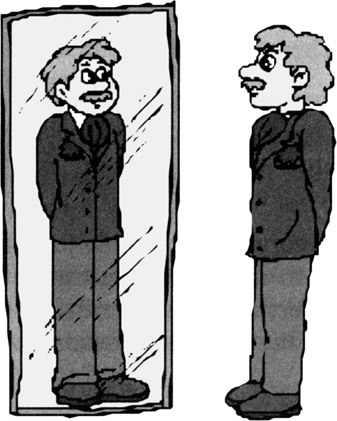CRITERIA FOR SECOND GUESSING
The question is: Once you have made a decision, how can you test it to ensure that it is the right one before you implement it? What criteria might you use for a second guess?
The single most important test there is for you to know that you have made the right ethical decision is your unequivocal yes or no answer to one single question:
Would you be comfortable with this decision if it were spread across the front page of your leading national newspaper and your local media headlines tomorrow morning?
This is your never-fail litmus test, that crucial and revealing test in which there is one decisive factor. What if you can't answer an unequivocal ˜yes to this question? How can you figure out what's wrong with your decision?
In a chapter called ˜Ethics Without the Sermon in an old book called Doing Ethics in Business , [ 5] Laura Nash posed questions for examining the ethics of a business situation. She provides 12 such questions. Here are 10 questions derived from her original ones but that are especially pertinent in the field of public relations. These questions provide a basis for creating a series of tests for helping public relations practitioners on a practical level to determine when they've made the ˜right decision.
-
What is your intention in making this decision? Be honest about this. What exactly are you trying to achieve and for whom? Once you recognize what you are really trying to achieve, you may find that your decision really won't get you there.
-
How does this intention compare to the results that you can realistically expect from this decision? Most of us have heard the expression that ˜the road to hell is paved with good intentions. This is one of those situations when the best of intentions will lead you to the wrong decision if you are actively aware that what you intend is not the most likely outcome in reality.
-
To whom are you showing loyalty with this decision? Society? Your employer? Your profession? Or yourself? In the field of public relations we have duties to a variety of parties, but in these days of focus on social responsibility, our duty to society often needs to take precedence, although clearly professional associations stress your duty to your employer/client. Indeed, a high level of moral development and functioning demands that we take the broader view.
-
Will this decision harm anyone ? The first rule of ethical decision-making is to do no harm. You need to consider all of the potential consequences for as many relevant parties as you can and take a long, hard look at the potential for injury .
-
Have you done everything possible to minimize harm? In the cold light of day-to-day business, it is not always possible to avoid harming everyone; however, it is essential that you take steps to minimize harm without rationalizing your actions.
-
Are you being honest in this decision? Are there elements of deception or subterfuge in your decision? Clearly, there is little room for dishonesty in our field.
-
What would happen if you were to discuss this decision with the affected parties in advance of implementing it? How might their input change the direction of your decision?
-
How would you feel about telling your mother what you have done? Your boss? Your peers? Your spouse? Your children?
-
Would you feel good about providing a salient ethics-based defence of your decision to anyone who questions you about it?
-
And finally, how would you feel about publicizing this decision to the world?
If your answers to any of the above questions make you feel squeamish, you probably need to reconsider your decision before you take action. This is key: second guessing yourself is done before you actually implement the decision. And the truth is that you often have little time in which to do this.
Finally, American management guru and professor Peter Drucker describes in his book Management Challenges for the 21st Century what he defines as the ˜Mirror Test. [ 6] This simple test of an ethical solution comes down to something very simple and very personal. Look in the mirror and ask yourself: what kind of person do you want to see?
Peter Drucker's mirror test

Figure 15.4: Peter Drucker's ˜mirror test
Before we move on to a final discussion of public relations practitioners as ethical decision- makers , the following is a summary guide ”a kind of checklist ”that you can apply to making ethical decisions.
A model for ethics decisions: best practice in public relations
| |
-
Gather all pertinent information.
-
Clearly define the problem.
-
Identify the professional values.
-
Apply principles of ethical decision-making.
-
Analyze your loyalties.
-
Make a decision.
-
Second-guess your decision.
-
Take action.
| |
Figure 15.5: A model for ethics decisions: best practice in public relations
EAN: 2147483647
Pages: 165